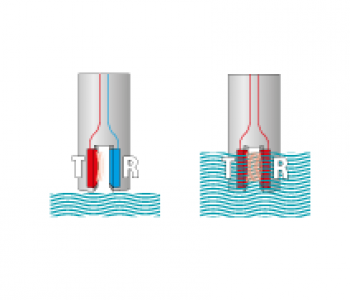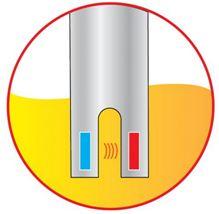
Echotel® Model 940 and 941 Ultrasonic Level Switches are compact integral units that utilize pulsed signal technology to perform high or low level measurement in a wide variety of liquid applications. These switches feature a 316 stainless steel tip-sensitive transducer that is offered in a variety of NPT, flanged, and sanitary process connections. The compact electronics are completely encapsulated just above the process fitting.
The Model 940 offers a 1-amp SPDT relay output. The Model 941 has a mA current shift output.


